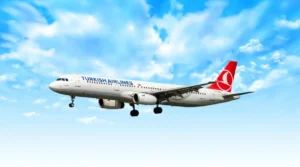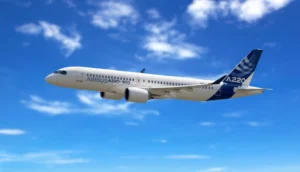Revolutionizing Al Maktoum Airport: New Vision for Dubai Aviation
Dubai Airports CEO Paul Griffiths unveils plans to re-engineer airport processes at Al Maktoum International, focusing on efficiency and sustainability for the future of travel.

Paul Griffith from IATA | Photo Source: Gulf News
Paul Griffiths, CEO of Dubai Airports, announced plans to revolutionize airport processes at the new Al Maktoum International (DWC). Speaking at the World Air Transport Summit during the IATA annual general meeting, Griffiths outlined the $32 billion project, aiming to create a seamless and efficient passenger experience within the next decade.
Griffiths criticized traditional airport designs for their inefficiencies, such as long walking distances and centralized security checkpoints, dubbing it the ‘lazy airport operator syndrome.’ He proposed a re-engineered process to minimize these issues, promising a quicker and more efficient journey from transport to plane.
Paul Griffiths, CEO of Dubai Airports, highlighted significant inefficiencies in traditional airport designs, pinpointing long walking distances and centralized security and immigration checkpoints as major drawbacks. He termed this design approach as the ‘lazy airport operator syndrome,’ which leads to unnecessary bottlenecks and delays for passengers. According to Griffiths, many airports worldwide have fallen into this trap, scaling up in ways that exacerbate these issues rather than addressing the core problems. This results in a frustrating experience for travelers, who often face long queues and extensive walking times between different parts of the airport.

Sustainability will be a key focus at the new terminal, with eco-friendly mobility options and extensive use of solar energy. Griffiths highlighted innovations like energy storage through water cooling to reduce the airport’s carbon footprint. He emphasized immediate actions over distant carbon neutrality targets to achieve tangible progress.
The fully developed airport will handle 260 million passengers, with 400 gates. The first phase aims to accommodate 150 million passengers in the next 10 years. This expansion aligns with the growing tourist numbers, where Dubai saw a shift from transit passengers to more visitors staying in the city.
Kamil Al-Awadhi, IATA’s Regional Vice President for Africa and the Middle East, predicted a 4% annual growth in passenger traffic in the UAE and Gulf countries from 2024 to 2030. This growth is supported by the region’s robust infrastructure plans, including the expansion of Al Maktoum Airport and new projects in Kuwait and Saudi Arabia.






